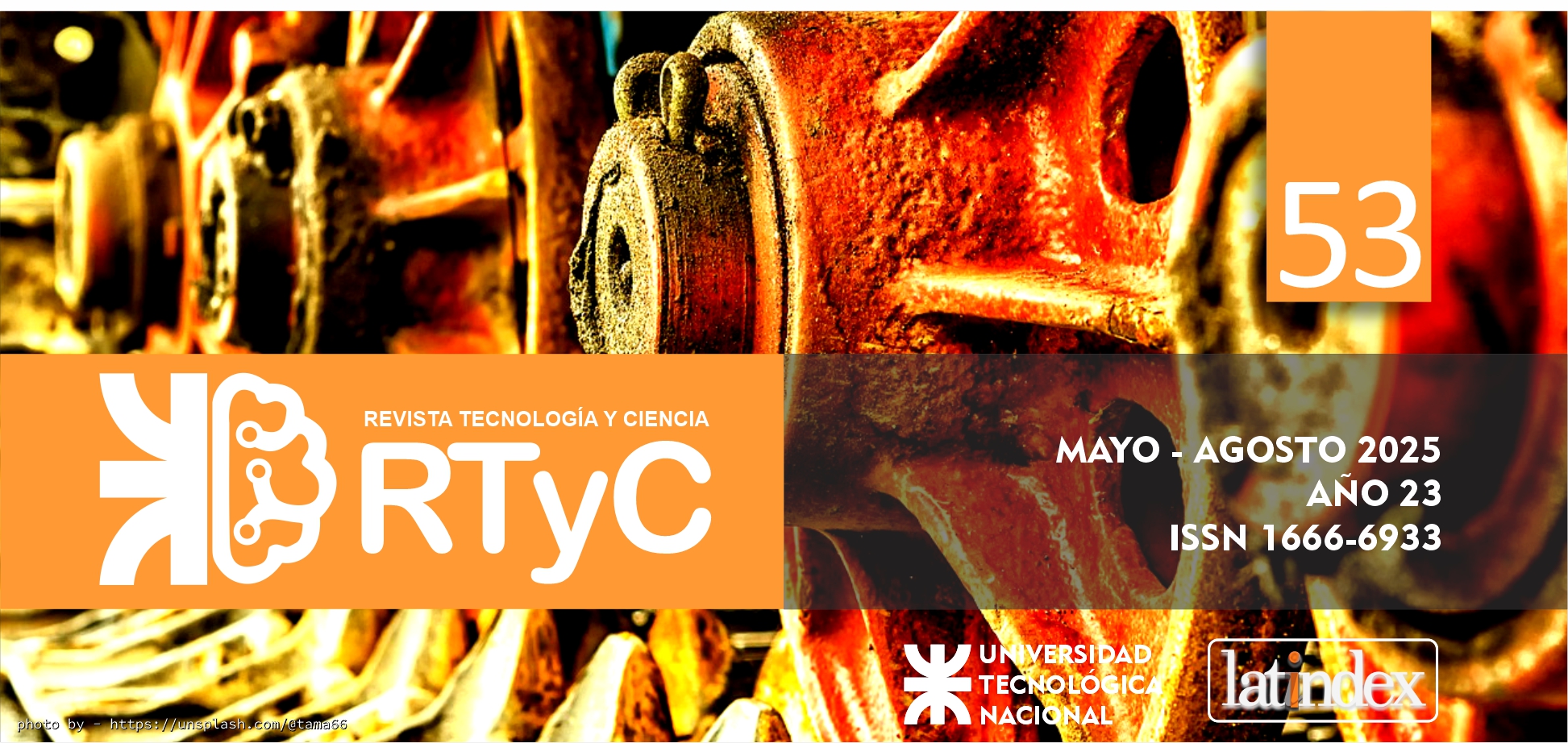Methodology study based on corrosion potential monitoring for cementitious mixtures performance evaluation – Part 1
DOI:
https://doi.org/10.33414/rtyc.53.1-14.2025Keywords:
Durability, Reinforcement corrosion, Performance evaluationAbstract
Concrete is a physical and chemical protect barrier for steel against corrosion. Due to concrete pH (≈13), a deterioration inhibitor stable oxide film (passive layer) develops on embedded steel. When concrete is contaminated with aggressive environmental agents, the passive layer is damaged and corrosion begins. In well-placed and defect-free concrete, the time in which aggressive agents reach reinforcements, and initiate corrosion, will depend on mixture quality and environmental exposure conditions. This paper presents a correlation between corrosion potential (ECORR), corrosion rate (VCORR) and environmental exposure, in search of a cementitious mixtures performance evaluation methodology that use the onset of corrosion (OCORR) as an indicator. Results showed that ECORR behavior responds to environmental changes, but it can be used to establish OCORR under appropriate exposure cycles.
Downloads
References
Alonso, C., Castellote, M., & Andrade, C. (2002). Chloride threshold dependence of pitting potential of reinforcements. Electrochimica Acta, 47(21), 3469–3481. https://doi.org/10.1016/S0013-4686(02)00283-9
Andrade, C., & Alonso, C. (1996). Corrosion rate monitoring in the laboratory and on-site. Construction and Building Materials, 10(5), 315–328. https://doi.org/10.1016/0950-0618(95)00044-5
Andrade, Carmen. (2019). Propagation of reinforcement corrosion: principles, testing and modelling. Materials and Structures, 52(2), 2–26. https://doi.org/10.1617/s11527-018-1301-1
Andrade, Carmen, Alonso, C., Gulikers, J., Polder, R., Cigna, R., Vennesland, … Elsener, B. (2004). Recommendations of RILEM TC-154-EMC: “Electrochemical techniques for measuring metallic corrosion” Test methods for on-site corrosion rate measurement of steel reinforcement in concrete by means of the polarization resistance method. Materials and Structures, 37(273), 623–643. https://doi.org/10.1617/13952
Angst, U. M., Boschmann, C., Wagner, M., & Elsener, B. (2017). Experimental Protocol to Determine the Chloride Threshold Value for Corrosion in Samples Taken from Reinforced Concrete Structures. Journal of Visualized Experiments, (126). https://doi.org/10.3791/56229-v
ASTM. (2020, July 15). Practice for Mechanical Mixing of Hydraulic Cement Pastes and Mortars of Plastic Consistency. ASTM International. West Conshohocken, PA: ASTM International. https://doi.org/10.1520/C0305-20
Basheer, L., Basheer, P. A. M., & Long, A. E. (2005). Influence of coarse aggregate on the permeation, durability and the microstructure characteristics of ordinary Portland cement concrete. Construction and Building Materials, 19(9), 682–690. https://doi.org/10.1016/j.conbuildmat.2005.02.022
Bentur, A., Diamond, S., & Berke, N. S. (1997). Steel corrosion in concrete: fundamentals and civil engineering practice. London, UK: E & FN Spon.
Bertolini, L., Elsener, B., Pedeferri, P., Redaelli, E., & Polder, R. (2013). Corrosion of Steel in Concrete: Prevention, Diagnosis, Repair (2nd ed.). Weinheim, Germany: WILEY-VCH.
Cigna, R., Proverbio, E., & Rocchini, G. (1993). A study of reinforcement behaviour in concrete structures using electrochemical techniques. Corrosion Science, 35(5–8), 1579–1584. https://doi.org/10.1016/0010-938X(93)90387-V
Duffó, G. S., Gomez, E. D., & Vazquez, D. R. (2018). Revisiting the Effect of the Corrosion Potential, the Matrix Resistivity and the Oxygen Availability on the Corrosion Rate of Steel Bars Embedded in Mortar. Journal of Scientific and Engineering Research, 5(9), 221–232.
Gouda, V. K., & Halaka, W. Y. (1970). Corrosion and corrosion inhibition of reinforcing steel II. Embedded in concrete. British Corrosion Journal, 5(5), 204–208. https://doi.org/10.1179/000705970798324478
Izquierdo, D., Alonso, C., Andrade, C., & Castellote, M. (2004). Potentiostatic determination of chloride threshold values for rebar depassivation. Electrochimica Acta, 49(17–18), 2731–2739. https://doi.org/10.1016/j.electacta.2004.01.034
Li, L., & Sagüés, A. A. (2001). Chloride Corrosion Threshold of Reinforcing Steel in Alkaline Solutions—Open-Circuit Immersion Tests. Corrosion, 57(1), 19–28. https://doi.org/10.5006/1.3290325
Mietz, J., & Isecke, B. (1996). Monitoring of concrete structures with respect to rebar corrosion. Construction and Building Materials, 10(5), 367–373. https://doi.org/10.1016/0950-0618(95)00016-X
Sathiyanarayanan, S., Natarajan, P., Saravanan, K., Srinivasan, S., & Venkatachari, G. (2006). Corrosion monitoring of steel in concrete by galvanostatic pulse technique. Cement and Concrete Composites, 28(7), 630–637. https://doi.org/10.1016/j.cemconcomp.2006.03.005
Tang, L., Frederiksen, J. M., Angst, U. M., Polder, R., Alonso, M. C., Elsener, B., … Pacheco, J. (2018). Experiences from RILEM TC 235-CTC in recommending a test method for chloride threshold values in concrete. RILEM Technical Letters, 3, 25–31. https://doi.org/10.21809/rilemtechlett.2018.55
Troncónis de Rincón, O., Romero de Carruyo, A., Andrade, C., Helene, P., & Diaz, I. (1998). Manual de inspección, evaluación y diagnostico de corrosión en estructuras de hormigon armado. Red DURAR - Programa CYTED.
Tuutti, K. (1982). Corrosion of steel in concrete. Royal Institute of Technology. Retrieved from https://portal.research.lu.se/en/publications/corrosion-of-steel-in-concrete
Published
How to Cite
Issue
Section
License
Copyright (c) 2025 Enzo David Gomez

This work is licensed under a Creative Commons Attribution-NonCommercial 4.0 International License.

















